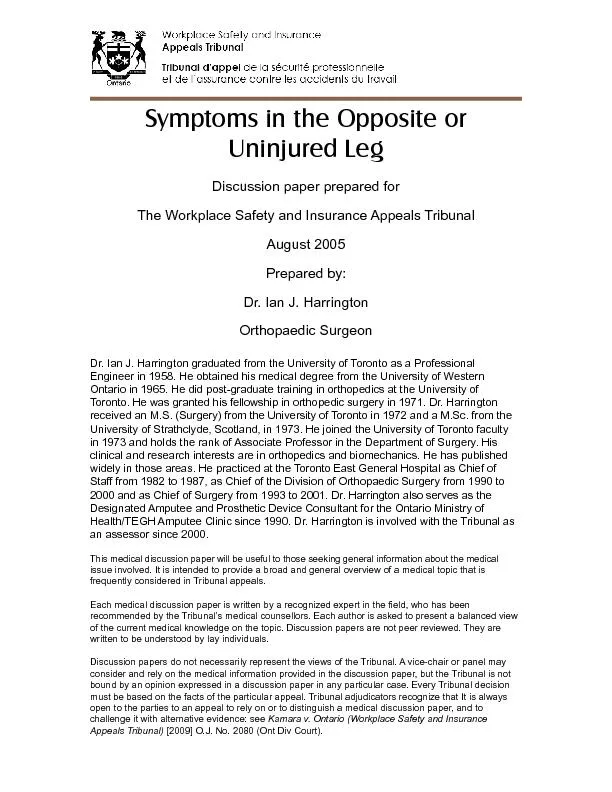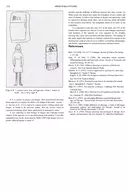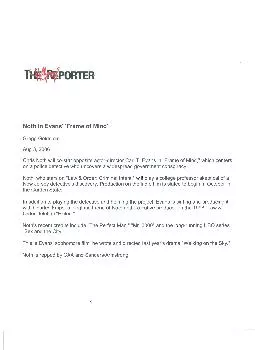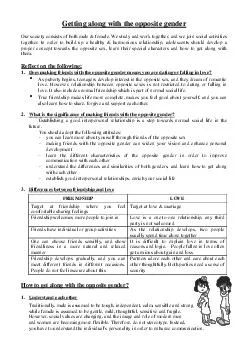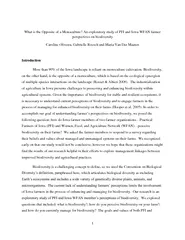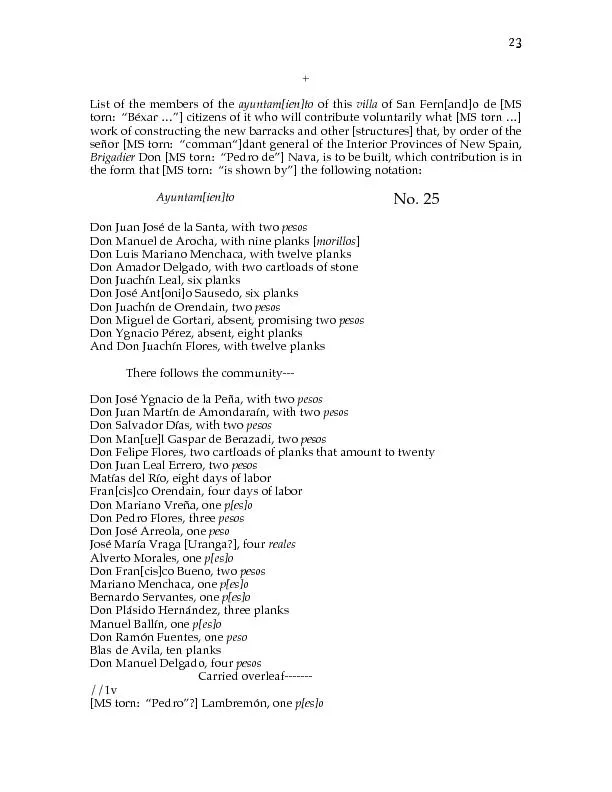PDF-Symptoms in the Opposite or
Author : alida-meadow | Published Date : 2016-08-18
Uninjured Leg Discussion paper prepared for The Workplace Safety and Insurance Appeals Tribunal August 2005 Prepared by Dr Ian J Harrington Orthopaedic Surgeon Dr
Presentation Embed Code
Download Presentation
Download Presentation The PPT/PDF document "Symptoms in the Opposite or" is the property of its rightful owner. Permission is granted to download and print the materials on this website for personal, non-commercial use only, and to display it on your personal computer provided you do not modify the materials and that you retain all copyright notices contained in the materials. By downloading content from our website, you accept the terms of this agreement.
Symptoms in the Opposite or: Transcript
Download Rules Of Document
"Symptoms in the Opposite or"The content belongs to its owner. You may download and print it for personal use, without modification, and keep all copyright notices. By downloading, you agree to these terms.
Related Documents

